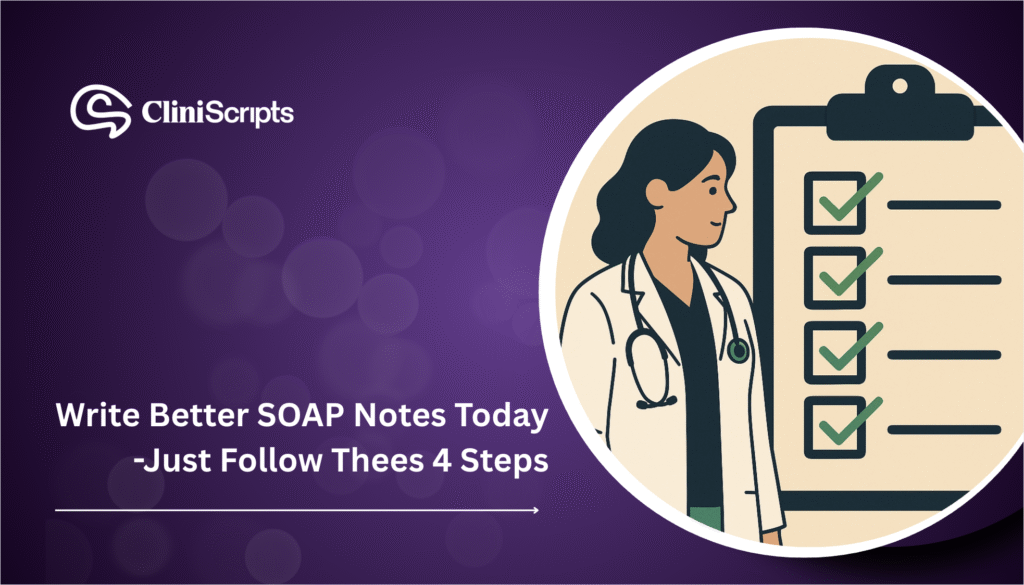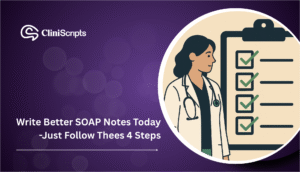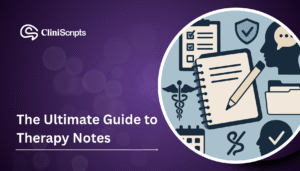Learn how to write effective SOAP notes with our simple SOAP note example for mental health professionals. This SOAP note example mental health template helps streamline documentation and improve client care.
In the aggressive therapy and medical environment, good documentation is a key component of successful patient care. Among all the methods used in patient encounter documentation, the SOAP note system is one of the most effective ways of systematic and structured recording of key information during treatment sessions. Whether you’re a new or experienced practitioner, understanding how to effectively utilize SOAP notes will improve your documentation process as well as help facilitate communication among peers.
If you’re looking for a clear SOAP note example tailored to mental health, this guide provides both a practical breakdown and a ready-to-use template.
Understanding SOAP Notes
The SOAP note format is simple but powerful—a neat and systematic way to document client sessions. Each area has its own purpose:
-
Subjective: Here clients share their feelings, thoughts, and perceptions of the session.
-
Objective: Therapists document here things observed, like behavior and appearance.
-
Assessment: The clinician summarizes the information gathered, giving diagnoses or assessments.
-
Plan: The final segment indicates the plan of treatment or future therapy steps.
This straightforward approach makes it easier for therapists to track progress and make the right decisions about treatment approaches. If you’re unsure how to apply it in practice, reviewing a SOAP note example mental health version can be incredibly helpful.
The Importance of Each Section
Let’s break down what to include in each part of the SOAP note specifically for mental health:
1. Subjective
The Subjective section records the client’s voice. This is not where the therapist’s observations go; this section is all about what the client has to say. Some of the main points to cover are:
-
Direct quotes from the client that reflect their emotional state.
-
Symptoms the client has self-reported, such as depression or anxiety.
-
Significant changes in life situation since the previous session.
For example, you may write:
“Client reports feeling ‘overwhelmed and lost’ after starting a new job.”
This conveys the client’s subjective experience directly without interpretation by the therapist.
2. Objective
In the Objective section, the therapist documents measurable and observable data related to the session. This may include:
-
Physical appearance: anxious, withdrawn, or engaged demeanor.
-
Behavioral observations: speech patterns, eye contact, or posture.
-
Test results or standardized assessments.
Example:
“Client appeared tense, with crossed arms and avoiding eye contact during the discussion.”
3. Assessment
The Assessment part requires clinical acumen and critical thinking. This is where a therapist synthesizes subjective and objective data to form an integrated picture of the client’s mental state. Here you can include:
-
New or updated diagnoses.
-
Therapist’s interpretation of the client’s current issues.
-
Key takeaways that guide future treatment direction.
For instance:
“Client’s increased anxiety appears to be due to workplace stress, which will be addressed through coping strategy development.”
4. Plan
The Plan section outlines next steps, such as:
-
Specific therapeutic interventions (e.g., cognitive behavioral therapy).
-
Homework or journaling for the client.
-
Referrals to other specialists if needed.
Example:
“Continue weekly sessions focused on stress management; introduce mindfulness exercises in the next session.”
Practical Template for SOAP Notes
Here’s a SOAP note example you can use for documenting mental health sessions:
Date: [Insert Date]
Client Name: [Insert Client’s Name]
Session Number: [Insert Session Number]
-
Subjective: [Client’s reported thoughts, feelings, and experiences]
-
Objective: [Observable behaviors and physical signs]
-
Assessment: [Clinician’s evaluation and synthesis of the data]
-
Plan: [Next steps in treatment and specific interventions]
This SOAP note example mental health template is flexible, easy to adapt, and can streamline your clinical documentation.
Conclusion
Using the SOAP note method allows therapists to maintain an organized and efficient record of client progress while adhering to best practices in mental health documentation. Incorporating real client input helps ensure that therapy remains person-centered. The structure of the SOAP note fosters clarity in communication, which is fundamental in building a trusted therapeutic relationship.
Regardless of how long you’ve been practicing, there’s always room to refine your documentation skills within this framework. And whether you’re just starting out or seeking to improve, a good SOAP note example mental health template can make a big difference. Effective notes not only support your clinical decision-making but also enhance the overall experience of your clients.











